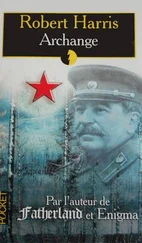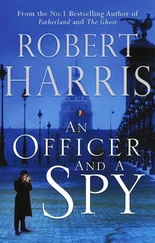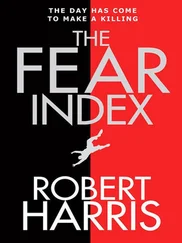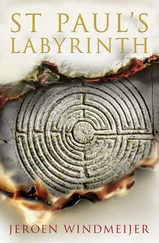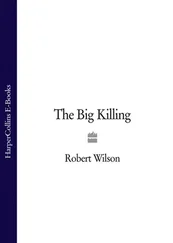In order that the experiment might be as fair as possible and that my respiration should be relatively as active as that of the dog, I remained standing, and took a few steps from time to time while I was in the chamber. In about thirty seconds the dog began to get unsteady, and in fifty-five seconds it dropped on the floor and commenced the characteristic distressing respiration which heralds death from cyanide poisoning. One minute thirty-five seconds after the commencement the animal’s body was carried out, respiration having ceased and the dog being apparently dead. I then left the chamber. As regards the result upon myself, the only real effect was a momentary giddiness when I turned my head quickly. This lasted about a year, and then vanished. For some time it was difficult to concentrate on anything for any length of time. 2
The affair of Barcroft’s Dog became one of the most famous incidents in the early history of chemical warfare. The Prime Minister, Lloyd George, wrote to Barcroft that he felt ‘the most intense admiration for the gallantry and devotion which you have shown… I desire to express personally, and as Head of His Majesty’s Government, my high appreciation of your brave action, which obtained information of quite exceptional value.’ 3‘Good God,’ said King George V when he heard of it, ‘what a wonderful plucky thing to do.’ 4
Barcroft’s phlegmatic attitude typified the early days of chemical warfare research. There were hair-raising stories. On one occasion, one of his female assistants travelled by train from his laboratory in Cambridge carrying a canister of poison gas. The canister began to leak in the compartment. She attached it to a piece of string, hung it out of the window and completed her journey to Porton.
Working methods were rough and often highly dangerous. A circular system of trenches was dug, from the centre of which cylinders of gas were discharged. Human guinea pigs (‘observers’ in Porton’s terminology) would station themselves in trenches and – for as long as they were capable of standing it – take detailed notes of the symptoms they felt. Indoors, the effects of chemicals were studied in the gas chambers. Ten minutes was found to be about the maximum most men could take exposed to a non-lethal gas. Observers were expected to stand in clouds of lethal gases for hours wearing prototype masks to test their reliability. Later, when mustard gas made its first appearance, they rolled up their sleeves and allowed their arms to be contaminated, in order to study the progression of the terrible blisters that developed. The work, wrote Foulkes (who was offered the job of Commander of Porton after the war, but turned it down) was ‘unpleasant’ and ‘dangerous’:
…but volunteers were always to be found who exposed themselves fearlessly in the chamber tests. In the case of experiments with mustard gas, experience showed that a man’s skin became more sensitive after one exposure and the only satisfactory course was to use ‘virgin skin’. There was, of course, no scarcity of this commodity in the country, even late in the war, but provision had to be made for a constant supply of newcomers among the experimental staff. 5
According to Porton’s own, recently declassified ‘in-house’ history, the demand for human beings needed in tests often far exceeded supply, ‘and cooks, orderlies and clerks were frequently pressed into service for experiments.’ 6Foulkes himself made a point of personally being exposed to every war gas considered for adoption by the British.
Not all the early scientists survived. Colonel Watson, head of the Allies’ Central Laboratory in France, died as a result of experiments he had conducted on himself. So too, in the final days of the war, did Colonel Harrison, Deputy Controller of the British Chemical Warfare Committee. Many more must have appreciably shortened their lives by their work. ‘Risks were taken,’ runs Porton’s internal history, ‘and sufferings were endured in a manner which was only possible by men of high morale under the urge of war.’
In their investigation into the effects of gas, the scientists at Porton had other sources of information apart from the experiments they conducted on one another. In 1917 a farm and breeding colony was added to the Establishment to provide the vast numbers of animals used in experiments. Thousands of reports of experiments made in these early years have now been released to historians. 7They give some idea of the scale and substance of the grim research which has made Porton notorious among antivivisectionists. Cats, dogs, monkeys, baboons, goats, sheep, guinea pigs, rabbits, rats and mice were variously tethered and caged outdoors in the trench system and indoors in the gas chambers for exposure to gas clouds. Chemicals were squirted into their faces and injected into them, and bullets, sprays and bombs fired into, over and at them. With the discovery of mustard gas, bellies and backs were shaved and the chemical rubbed in; some animals were opened up and their organs smeared with mustard, the wound then stitched back together and the symptoms which developed noted. The Establishment became such a prominent centre of vivisection that it later developed its own strain of ‘Porton mice’, now a standard laboratory animal in use throughout the world.
These animal experiments were as unpopular among most non-scientists then as they are today. Haldane records that the physiologists at Porton ‘had considerable difficulty in working with a good many soldiers because the latter objected so strongly to experiments on animals, and did not conceal their contempt for the people who performed them’. 8And Sir Austin Anderson – at that time a junior member of Porton’s staff – recalled ‘a highly intelligent and friendly little monkey that the men loved so much that they gave him a little khaki coat with corporal’s stripes, christened him the APM, and gave him the free run of the animals’ quarters. He never went into the gas chamber and I think he survived the war.’ 9
The hours at Porton during the First World War were long, the number of experiments almost more than the system could cope with. ‘It was not uncommon for the Officer-in-Charge to spend four to six hours each evening, seven days a week, in writing up and assessing accumulated results.’ 10And always, a few hundred miles away in France, was the pressure of battle, the scientists’ main source of raw data. ‘We had,’ wrote Foulkes, ‘in the theatre of war itself a vast experimental ground… Human beings provided the material for these experiments on both sides of No Man’s Land.’ 11
The bodies and organs of gassed soldiers were regularly shipped back to Porton for microscopic examination by the physiologists of the Royal Army Medical Corps – ‘the body snatchers’ as they were known at Porton. For the scientists’ records, oil paintings were made of organs taken from post mortems. In some cases body parts themselves were preserved: a scientist’s report of October 1923, five years after the end of the war, speaks of ‘a score of human cases gassed by HS in France, which I have recently had an opportunity of studying.’ 12
As the war progressed and work intensified, Porton underwent rapid expansion. Its testing ranges were doubled in size. The early collection of huts grew into a small village, housing five separate sections. Eight rows of barracks accommodated more than a thousand troops, ballistics experts, army doctors and scientists. These were backed up by a civilian workforce of five hundred. To the system of trenches and dug-outs was added a new firing range, a mile and a half long, manned by wounded artillery men; they claimed that with their pay topped up by Porton’s ‘danger money’, they earned more carrying out test shoots on Salisbury Plain than they did under fire from the Germans on the Western Front.
Читать дальше




